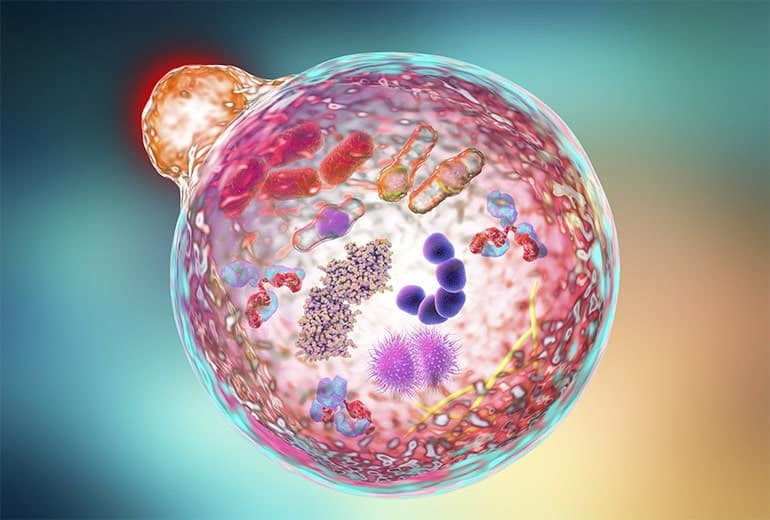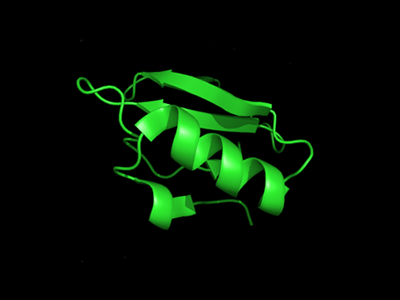![]() Open collaboration is important for sustainable science, and every new study or publication, no matter the journal or institution, contributes to a greater understanding of biology, for better or for worse. Dozens of prior discoveries funnel into every new breakthrough, so we need to appreciate the years of painstaking labor and thought that go into every new morsel of knowledge. It is very fulfilling when ABclonal products are part of the fuel that drives these studies in diverse fields of biology. With our ABclonal in Action series, we hope to highlight our products as well as the new insights from our customers all over the globe that will become stepping stones for the next generation of cutting-edge bioscience.
Open collaboration is important for sustainable science, and every new study or publication, no matter the journal or institution, contributes to a greater understanding of biology, for better or for worse. Dozens of prior discoveries funnel into every new breakthrough, so we need to appreciate the years of painstaking labor and thought that go into every new morsel of knowledge. It is very fulfilling when ABclonal products are part of the fuel that drives these studies in diverse fields of biology. With our ABclonal in Action series, we hope to highlight our products as well as the new insights from our customers all over the globe that will become stepping stones for the next generation of cutting-edge bioscience.
Some Teeth to It: The Circadian Rhythm in Enamel Development
We talked about the importance of the circadian rhythm in proper organismal function and health, and tooth development and dental health is not to be overlooked. A research group from Wuhan University in China was curious as to how the circadian rhythm would affect the regulation of ameloblast differentiation. 1 The ameloblast is a specialized cell that is key to the development of enamel, the hardest tissue in the human body that strengthens teeth and allows us to eat a variety of foods. Enamel does not have much regenerative ability, and therefore must last our entire lives, so the proper differentiation and function of ameloblasts is critical to dental health. The authors of this study built off previous findings that both circadian genes and markers of ameloblast differentiation would oscillate. They used circadian disruption techniques in mice to show that knocking down the period gene PER2 would lead to decreased expression of critical gene products and inhibit enamel formation. While this finding is quite niche, it gives us yet another reason to be thankful for an orderly circadian rhythm!
 Here are the ABclonal antibody products (with catalog numbers) used in this study:
Here are the ABclonal antibody products (with catalog numbers) used in this study:
- PPARgamma (A0270)
- AKT1-phospho-Ser473 (AP0140)
- beta-catenin-phospho-Ser552 (AP0579)
- AKT1 (A11016)
- beta-catenin (A11343)
- Lamin B1 (A1910)
A Hair-Raising Epiphany: Annexin A4 is Dispensable?
Recently, a Massachusetts-based biotechnology company showed that small molecule therapy could be used to reprogram progenitor cells in the inner ear to reproduce the hair cells that could potentially reverse hearing loss in deaf patients. Researchers from Shandong University in China noted that annexin A4 (ANXA4) is expressed in hair cells, but wanted to understand its function in the development and function of those cells. 2 The unexpected result was that ANXA4 knockout did not affect hair cell function at all, suggesting that other annexins might serve a redundant function. While this would sometimes be considered a “negative result,” this will provide other avenues to explore the function of ANXA4 in these particular cells.
Abnormal Splicing Control in Neurological Disorder
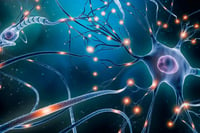 Rett syndrome is a severe neurological disorder that primarily affects young girls because the primary cause is in an X-linked gene encoding methyl-CpG binding protein 2 (MeCP2). Researchers in China were interested in understanding the underlying molecular mechanism behind this disease. In their mouse models, they found that defective MeCP2 abrogates the assembly of a multi-protein complex, which leads to abnormal splicing of transcripts and impairs normal synaptic development. 3 A better mechanistic understanding of this process may one day reveal better treatments for Rett syndrome.
Rett syndrome is a severe neurological disorder that primarily affects young girls because the primary cause is in an X-linked gene encoding methyl-CpG binding protein 2 (MeCP2). Researchers in China were interested in understanding the underlying molecular mechanism behind this disease. In their mouse models, they found that defective MeCP2 abrogates the assembly of a multi-protein complex, which leads to abnormal splicing of transcripts and impairs normal synaptic development. 3 A better mechanistic understanding of this process may one day reveal better treatments for Rett syndrome.
Here are the ABclonal antibody products (with catalog numbers) used in this study:
Golgi, Exosomes, and Cancer Metastasis
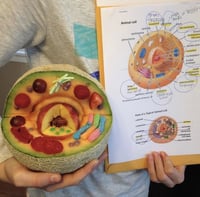 Many of us learned about the Golgi from our introductory biology classes in high school or college, and the role of the Golgi and vesicular transport pathways in driving tumorigenesis is studied extensively. A group from Shenzhen University in China hypothesized that a Golgi protein (GOLPH3), which is highly expressed in many cancers and associated with poor prognosis, was responsible for the progression of non-small cell lung carcinoma (NSCLC). They were able to show that GOLPH3 interacts with a cytoskeletal protein, leading to the secretion of WNT3A in exosomes and driving metastasis in NSCLC. 4 It appears that GOLPH3 enhances exosome formation and activation of the beta-catenin pathway, providing another possible biomarker in the early detection and treatment of NSCLC.
Many of us learned about the Golgi from our introductory biology classes in high school or college, and the role of the Golgi and vesicular transport pathways in driving tumorigenesis is studied extensively. A group from Shenzhen University in China hypothesized that a Golgi protein (GOLPH3), which is highly expressed in many cancers and associated with poor prognosis, was responsible for the progression of non-small cell lung carcinoma (NSCLC). They were able to show that GOLPH3 interacts with a cytoskeletal protein, leading to the secretion of WNT3A in exosomes and driving metastasis in NSCLC. 4 It appears that GOLPH3 enhances exosome formation and activation of the beta-catenin pathway, providing another possible biomarker in the early detection and treatment of NSCLC.
Here are the ABclonal antibody products (with catalog numbers) used in this study:
- GOLPH3 (A13121)
- MUC1 (A0333, A19081)
- WNT1 (A2475)
- WNT3 (A9328)
- WNT5A (A19133)
- CD133 (A0219)
- ZEB1 (A1500)
Save Our Brains: New Anti-Inflammatory Drug to Treat Traumatic Brain Injury?
In the context of traumatic brain injury, scientists from Huazhong University in China studied the effects of an anti-inflammatory drug, BAY61-3606, in modulating microglial cells (the immune cells in the nervous system) and damage to neurons. 5 Treatment with BAY61-3606 was able to reduce inflammation in both cell and mouse models of brain injury. This finding is encouraging as a possible treatment strategy for people who have suffered brain injury due to accidents, and also professional athletes suffering from concussions such as American football and ice hockey players.
 Here are the ABclonal antibody products (with catalog numbers) used in this study:
Here are the ABclonal antibody products (with catalog numbers) used in this study:
- GFAP (A0237)
- Syk (A2123)
- phospho NFkB Ser 276 (AP0123)
- NFkB (A19653)
- ASC (A16672)
- Caspase-1 (A0964)
- GAPDH (A19056)
- beta-actin (AC026)
Finding Substrates For an Intriguing Enzyme
In all cells of all organisms, dehydrogenase and reductase enzymes are required for most life functions including the processing of metabolites and macromolecules. Much is still unknown about the human microsomal dehydrogenase reductase 9 (DHRS9), including its target substrates. A collaboration between American universities sought to determine this substrate preference. 6 The study found that DHRS9 reacted against oxylipins, which are lipids generated by oxidation, and are implicated in the inflammatory response. This discovery may contribute to further mechanistic studies of DHRS9 in disease progression associated with inflammation.
Protecting Pregnancy Through Controlling…Lactic Acid?
Macrophages are critical to the immune response from the time of embryo implantation into the uterus. Unfortunately, sometimes tumors are able to seize macrophages into their microenvironment and use inflammatory response for their own gains. In a collaboration between Chinese and American universities, scientists studying the role of macrophages during early pregnancy were able to show that blocking lactic acid uptake by macrophages could prevent pregnancy loss. 7 The study involved targets in lactic acid metabolism (LDHA), hypoxia (HIF-2alpha), and signal transduction pathways (SRC), among many others (what a lovely customer!). While the study was performed in the context of a pregnancy model, knowing that lactic acid also plays a role in tumorigenesis, this finding may suggest a new method to temper tumor progression.
MicroRNAs Do More Than We Thought
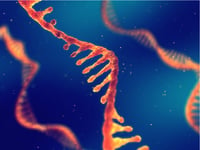 MicroRNA (miRNA) are regulatory transcripts that target and modulate the endogenous levels of messenger RNA. Many miRNA are associated with cancers, including miR-10b, which is often expressed in glioblastomas and promotes tumor survival. A multi-national study that included Harvard University sought to determine the targets of miR-10b in glioblastoma. 8 The surprising finding was that miR-10b associates with the U6 small nuclear RNA, which is a key part of the spliceosome. This suggests that one strategy employed by tumors, including glioblastoma, is to alter the alternative splicing of critical genes that ensure their survival.
MicroRNA (miRNA) are regulatory transcripts that target and modulate the endogenous levels of messenger RNA. Many miRNA are associated with cancers, including miR-10b, which is often expressed in glioblastomas and promotes tumor survival. A multi-national study that included Harvard University sought to determine the targets of miR-10b in glioblastoma. 8 The surprising finding was that miR-10b associates with the U6 small nuclear RNA, which is a key part of the spliceosome. This suggests that one strategy employed by tumors, including glioblastoma, is to alter the alternative splicing of critical genes that ensure their survival.
Here are the ABclonal antibody products (with catalog numbers) used in this study:
A New Drug Against Prostate Cancer?
Prostate cancer remains one of the leading causes of death in men. A group from Stanford University presented a small molecule termed SU086 as a therapy against advanced prostate cancer. 9 The molecule targets heat shock protein 90 (HSP90), impairs glycolysis, and reduces prostate tumor growth, migration, and invasion in cell lines and tissues derived from patients. The apparently low toxicity of SU086 in mice suggests it may be an effective therapy for prostate cancer once cleared for human clinical trials.
Here are the ABclonal antibody products (with catalog numbers) used in this study:
Much Ado About RNA Turnover
Messenger RNA has a fleeting lifespan, with highly regulated checkpoints from the initiation of transcription all the way through to degradation. Scientists from the University of Victoria in Canada were interested in further defining the particulars of ARS2-mediated RNA metabolism. 10 They showed that ARS can be alternative spliced into two distinct isoforms, one that operates in the cytoplasm, with the other isoform remaining in the nucleus. Switching between ARS isoforms has implications in proper RNA turnover and the ability of the cell to sense stress stimuli, including toxins such as arsenic.
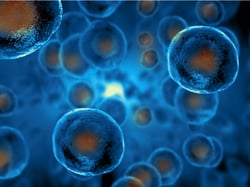 Here are the ABclonal antibody products (with catalog numbers) used in this study:
Here are the ABclonal antibody products (with catalog numbers) used in this study:
References
- Huang et al. (2021) “PER2-mediated ameloblast differentiation via PPAR-gamma/AKT1/beta-catenin axis.” Int J Oral Sci 13:16 (Epub).
- Li et al. (2021) “Annexin A4 is Dispensable for Hair cell Development and Function.” Front Cell Dev Biol 9:680155 (Epub).
- Jiang et al. (2021) “Rett syndrome linked to defects in forming the MeCP2/Rbfox/LASR complex in mouse models.” Nat Commun 12:5767 (Epub).
- Song et al. (2021) “GOLPH3/CKAP4 promotes metastasis and tumorigenicity by enhancing the secretion of exosomal WNT3A in non-small-cell lung cancer.” Cell Death Dis 12(11):976 (Epub).
- He et al. (2022) “BAY61-3606 attenuates neuroinflammation and neurofunctional damage by inhibiting microglial Mincle/Syk signaling response after traumatic brain injury.” Int J Mol Med 49(1):5 (Epub).
- Belyaeva et al. (2022) “Dehydrogenase reductase 9 (SDR9C4) and related homologs recognize a broad spectrum of lipid mediator oxylipins as substrates.” J Biol Chem 298(1):101527 (Epub).
- Gao et al. (2022) “Trophoblast-derived Lactic Acid Orchestrates Decidual Macrophage Differentiation via SRC/LDHA Signaling in Early Pregnancy.” Int J Biol Sci 18(2):599-616.
- El Fatimy et al. (2022) “A nuclear function for an oncogenic microRNA as a modulator of snRNA and splicing.” Mol Cancer 21:17 (Epub).
- Rice et al. (2022) “SU086, an inhibitor of HSP90, impairs glycolysis and represents a treatment strategy for advanced prostate cancer.” Cell Rep Med 3(2):100502 (Epub).
- Mesa-Perez et al. (2022) “Cytoplasmic switch of ARS2 isoforms promotes nonsense-mediated mRNA decay and arsenic sensitivity.” Nucleic Acids Res 50(3):1620-1638.



